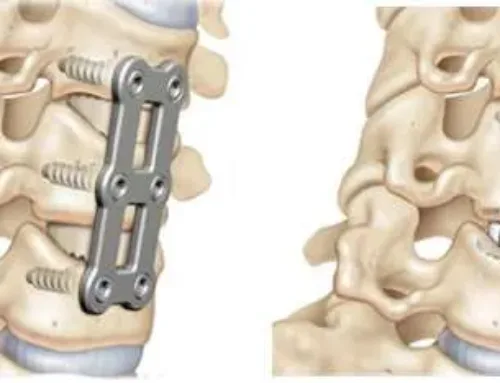Back pain is one of the most common complaints that physicians evaluate in the office. Approximately 80% of individuals will experience some sort of acute back pain in their lifetime, while others may suffer from chronic pain as a result of a degenerative condition or injury. There are several factors that can attribute to this; diagnosing and treating these factors can be achieved with interventional spine procedures.
Common Interventional Treatments for Back Pain
A doctor will likely recommend less invasive forms of treatment as the first option for patients. If conservative treatments such as NSAID’s (Ibuprofen) or oral steroids do not provide relief, a doctor may opt for interventional treatment. Interventional treatments are more invasive than conservative options but can provide long-term relief.
Nerve blocks
This is a common treatment for back and leg pain. There are many different types of nerve blocks that can help diagnosis and treat the back and legs. A selective nerve root block localizes the exact nerve that could be contributing to low back and leg pain and anesthetizes the nerve for a short duration. The interventional physician may then add steroids along the nerve to treat inflammation and reduce pain. Nerve blocks can be repeated if they provide relief.
Facet injections
These injections typically treat “axial” back pain, or pain that is localized only to the back and does not radiate down the legs. A facet injection is performed to diagnosis and treat the joints in the cervical, thoracic and lumbar spine that contribute to activity related pain. The facet injection can be achieved by injecting local anesthetic into the joint or blocking the nerve that supplies the joint. Steroids can be used to decrease inflammation within and around the joint capsule.
Epidural Steroid Injections
Epidural steroid injections are injections of steroids into the space around the spinal cord. These types of injections can decrease the pain and inflammation associated with a herniated disc, spinal stenosis or annular tears. Epidural steroid injections are a common first injection to treat an affected area: Cervical, Thoracic or Lumbar. The procedure can typically be repeated based on a patient’s response to the treatment.
Orthobiologic Procedures
These procedures utilize a patient’s own blood or bone marrow aspirate to treat a specific area in order to reduce discomfort and restore function. There are many different treatment options based on a patient’s symptoms and underlying spine conditions. Options for treatment can provide long-lasting relief for many patients.
Spinal cord stimulation
SCS is typically used after surgical treatments have failed for patients. There are two portions to a spinal cord stimulation procedure. First, the patient will have a stimulator trial to see if the stimulator provides them 50% or more pain relief before a permanent spinal cord stimulator is implanted.
These stimulators consist of electrodes in the form of ultra-thin wires and a generator which is similar to a pacemaker battery pack. During the permanent implantation, doctors will administer local anesthesia and two small incisions will be made. A type of x-ray called fluoroscopy will be used to guide the electrodes to their place along the spine. Placement of the electrodes will be based on where the pain is occurring for the patient. The electrodes will be held in place by sutures and the generator will be implanted permanently. The generator is able to send electrical impulses to the electrodes which interfere with the pain signals sent from the nerves to the brain. 50%-80% of patients experience long-term relief with this procedure.
As science and technology continue to advance, interventional treatments for pain continue to advance as well. The team at First State Spine There provides options to those suffering from back pain and relief can be achieved. Contact them today for a consultation and to learn more about what treatments are available to give you the relief you need.






